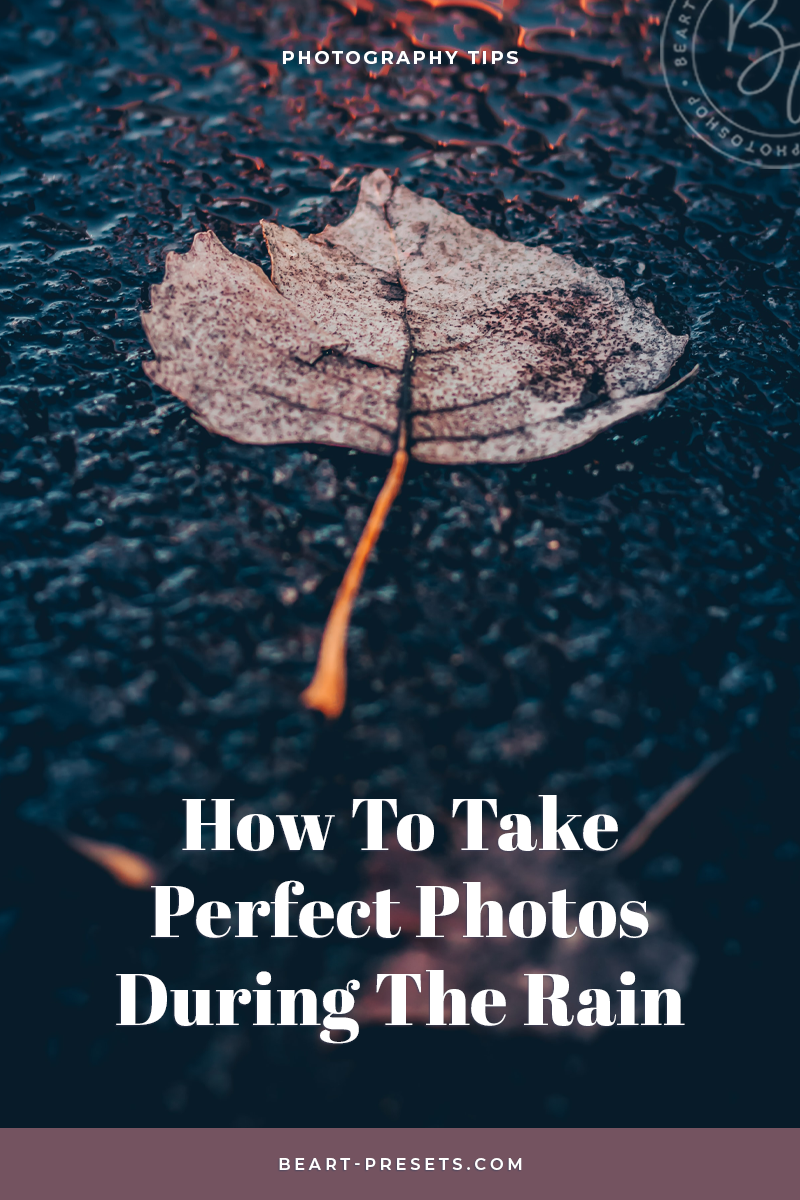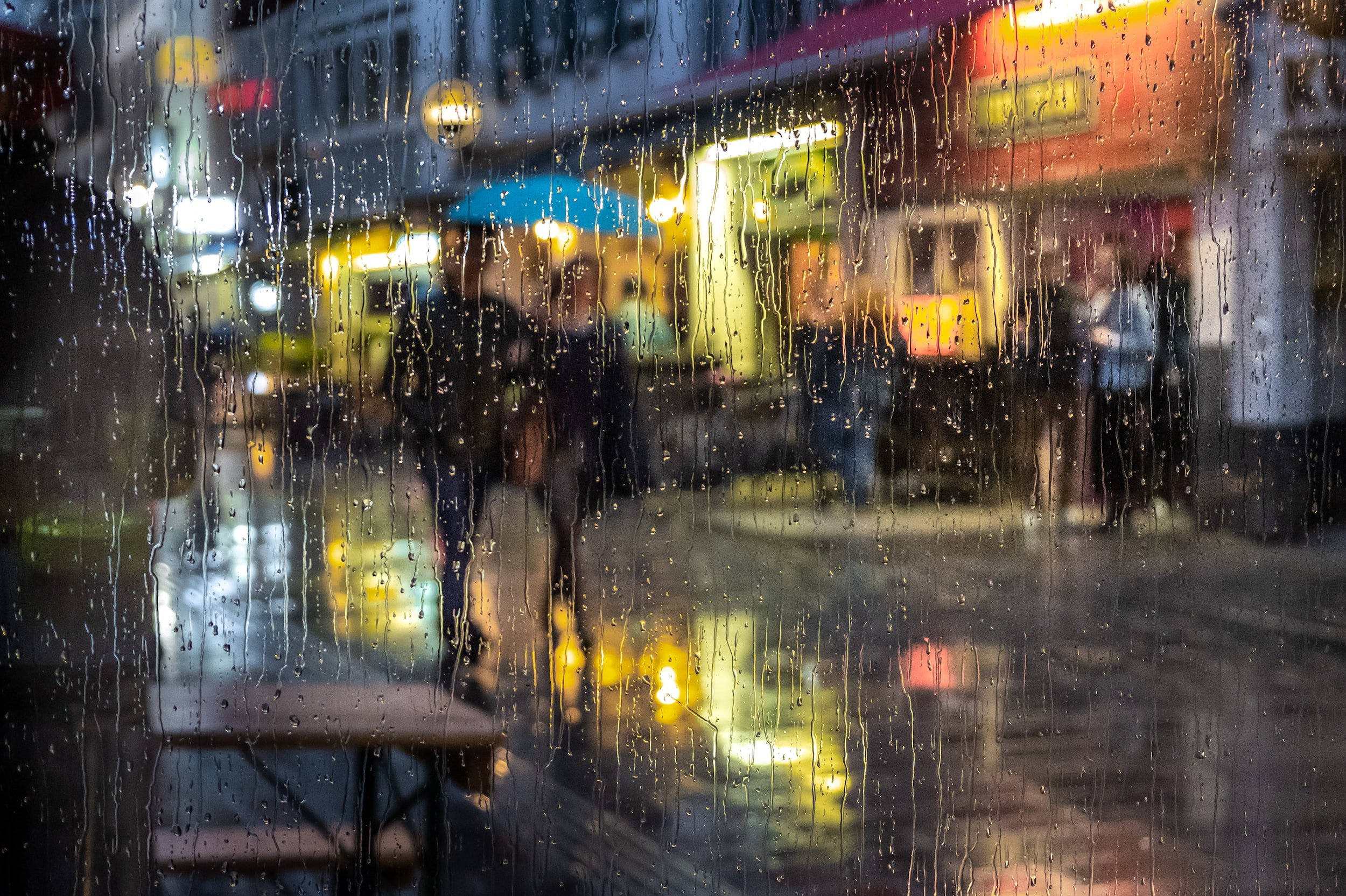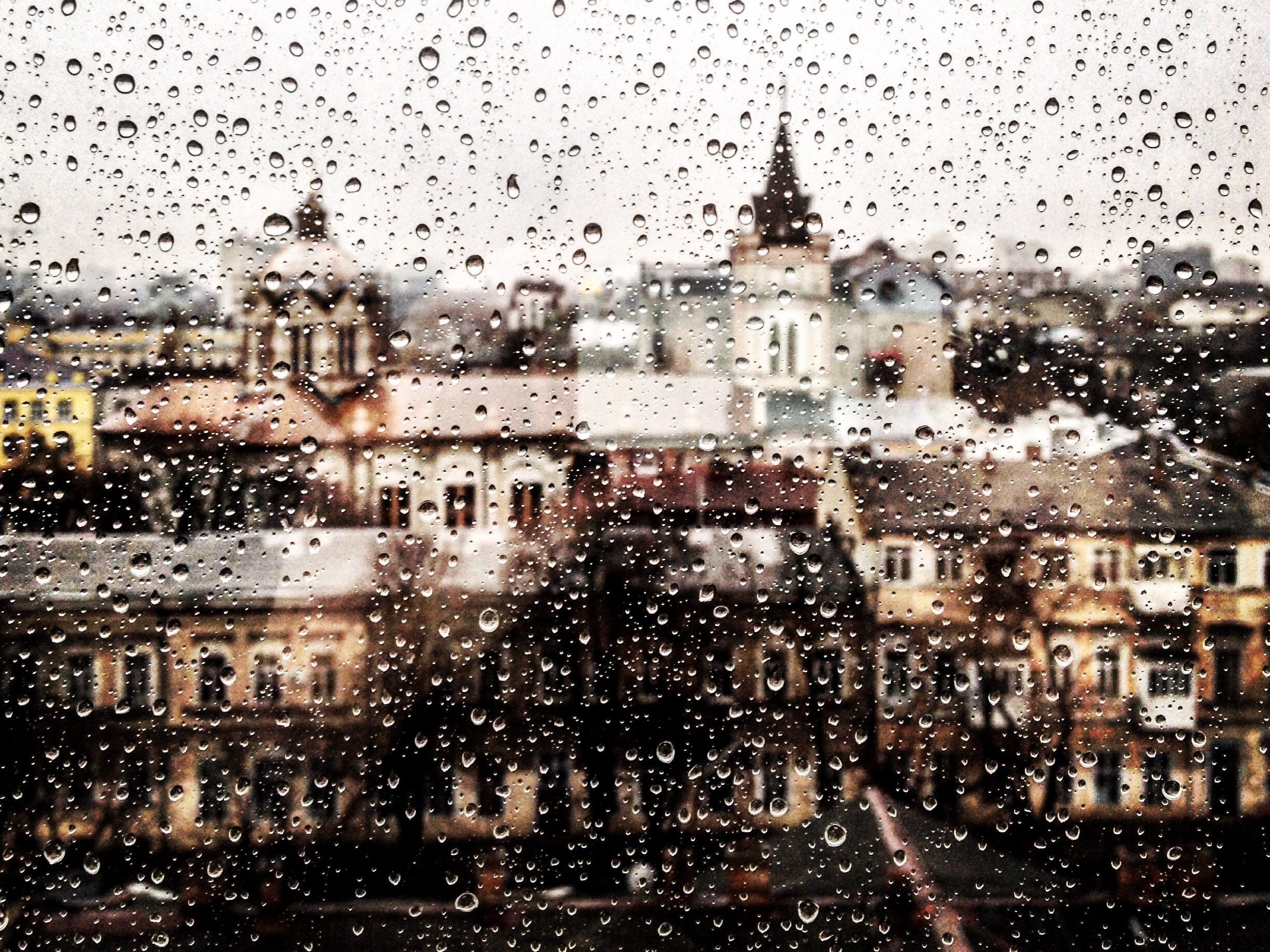Guide to taking Perfect Photos During The Rain
Even the rainy British weather shouldn't deter you; instead, you should make use of the photo opportunities it offers. Let's learn how to take excellent pictures in the rain.
"It's common knowledge that the first topic of conversation between two Englishmen when they meet is the weather. They are eager to inform each other of what they are sure they already know, such as whether it is hot or cold, sunny or cloudy, windy or calm" Samuel Johnson once said. Rain is a part of nature just like the sun, stars, or clouds, so you should never hesitate on taking pictures when it rains.
Many well-known pictures have been taken in the rain, such as Elliot Erwitt's leap in the rain in 1989 for the 100th anniversary of the Eiffel Tower. Dennis Stock's 1955 shot of actor James Dean strolling through the desolate Manhattan rain as it poured on a lifeless Times Square.
Alberto Giacometti in a Parisian flood, photographed by Henri Cartier-Bresson in 1961, and Martin Parr's debut book, Bad Weather (published by A. Zwemmer Ltd. in 1982), where Martin employs a waterproof camera to capture the British people who must deal with the weather or who are motivated to accomplish anything despite it. Put on your wellies and endure the rain if you're a photographer who takes their job seriously.
You need to adjust your mental barometer if you curse the weather and put your gear away the moment it starts to rain. According to landscape and travel photographer Tony Worobiec, there is no such thing as terrible weather; there are always new challenges, and rain is one of them. It requires a commitment to go outdoors and capture shots while it's pouring fiercely, but if you do, you'll be rewarded with some lovely possibilities, he claims.
Rain is something that most British photographers take for granted because they have seen enough of it throughout their lifetimes. But with a little imagination and creative thinking, shooting in the rain may be a terrific opportunity to get some truly unique images.
Unfavorable weather doesn't exist
That's what Tony has regularly carried out. He screamed inside when a colleague informed him that they had to sit inside a hotel room for two days during a workshop because of the terrible weather. “ I think rain gives an awesome opportunity for excellent photos. It's amazing how it changes previously unremarkable places. Rain has long been one of my favorite things.” claims Mr. Worobiec.
The goal of Tony's book, Photographing Landscape Whatever the Weather (RHE Media Limited 2018), is to convince the reader that there is no such thing as bad weather and that each condition offers a unique set of photographic chances. The trick, he says, is to choose a place that works well for each type of weather, rather than wishing for a sunny, clear day or a foggy one.
The beauty of taking photos in the rain is that you can do it anywhere. With his photographs of the woods, Tony creates stark images of seashore piers reflecting in rainwater. He creates a misty appearance with vivid colors in the trees closest to the camera, with the middle and far distance as though in a light fog. For this trick, he uses the lens Canon EF100-400 mm f/4.5-5.6L IS USM to compress perspective. It has a rural and lovely vibe overall.
After rainbows
"On any day of the week, I prefer rain to light”. David Oxtaby, a well-known amateur photographer, fully agrees that rain significantly enhances photographs. David is based in West Yorkshire and primarily focuses on shooting local landscapes, however, he occasionally travels to Wales and the Isle of Wight. His book, Yorkshire – A Different Perspective, is expected to be published later this year. His work has twice been selected for the national Historic Photographer of the Year competition's shortlist.
Additionally, he has a pure talent for capturing rainbows. You know there's a chance of a rainbow when the conditions are just right because you get this sense when you monitor the skies and see a break where the sun can shine through, and the clouds are vanishing. I take my camera out and wait for it to happen.
His breathtaking image of a double rainbow taken on the edge of the Yorkshire Dales close to the village of Embsay on October 23, 2020, when rainbows served as a sign of appreciation for important workers during the epidemic, was picked up and widely publicized in the national news.
Once I noticed the clouds started moving, I knew I'd see a rainbow not and I prepped all that I needed. I couldn't speak as the double rainbow emerged. It was a fantastic moment, so after taking a few pictures, I paused and just observed. It's rare to witness a second rainbow that's as brilliant as the first.
When photographing rainbows, I hardly ever use a tripod because I want to focus on the rainbow. I'll make sure the camera—typically my Olympus E-M10 Mk II—has the adaptable and portable M.Zuiko Digital ED 9-18 mm F4.0-5.6 wide-angle zoom lens mounted because you'll frequently be close to the rainbow, and I'll set the aperture to 7.1.
It's crucial to use a polarizing filter to bring out the colors. I'll bring an umbrella if there isn't any wind to keep the camera dry, but it doesn't always work. It usually blows against your back when a rainbow is there”, he recalls.
As a huge admirer of Olympus, I frequently utilize their cameras to capture rainbows. I might soften the shadows in the editing process. I barely changed the Embsay double rainbow at all. When you turn on your polarizing filter, you essentially get what you see on the screen,” says David.
“A clean sky without clouds is the worst kind of weather in my opinion since it is repetitive and devoid of drama or mystery. It all enhances the photograph when there are clouds in the sky, whether they are rain or storm clouds. It's challenging to take photos on a bright, foggy day when the light is quite flat, but as you watch the water-filled clouds approach, there's drama. Sunniness is the worst type of weather. I do adore photography since I can share it with others, and it helps me stay in check. Photography has several benefits. Even a picture of rain might make someone's day better!”
In retrospect
Photographer Alex Saberi for National Geographic is likely best known for his images of Richmond Park (ACC Editions 15 Jun 2012), which were taken close to where he resides in London. He also enjoys a good downpour in the city. You gradually learn to look at a rain forecast and shout, “Awesome!,” even though the majority of people don’t seem to be fans of the rain. Head outdoors to take shots after getting your camera ready.
His handheld images of London landmarks reflected in asphalt, water, and fissures are highlighted with color streaks. “I enjoy color, and my eye is adapted to it.”
When creating the Rain series, it was important to capture the vitality and color of the scene. For this, the sun had to be almost set when Big Ben or Tower Bridge lit up, bringing out the colors of the street lights and waning daylight.
People moving across the scene can still be captured with a high ISO. More intriguing colors and patterns are created by the rain. Regarding myself, I enjoy photographing upscale events like the Henley Royal Regatta and Royal Ascot. When the clouds open up, you might see a tremendous visual transformation since everyone is dressed up. To sharpen the colors and make the raindrops stand out, I prefer to use a flash that is one to three stops under.
Therefore, you must have the ability to work in the rain if you want to be an all-around effective photographer. It teaches you to creatively adjust to and include the subject in front of the lens. You are missing out if you just shoot when the weather is ideal.
Get Innovative
In the rain, you may also get some intriguing pictures by catching moving automobiles and the splashes they produce. To prevent getting wet while taking pictures, consider using a long lens and photographing from an open window or a higher level of a multi-story parking garage. If it's simply too muddy to go outside, think about taking pictures of the window as a potential great abstract subject.
The key, according to Tony, is to use a wide aperture to sharpen the image of the droplets on the glass window while blurring the background. “By focusing closely on the little cluster of droplets, they serve as an impromptu prism of the surroundings. If you try it, make sure your lens is parallel to the glass surface when you take the photo.
The kind of rain varies
Rain occurs in many different forms, such as gloomy clouds, and each one provides particular photographic challenges. The lightest form, drizzle, is reasonably workable. It is frequently mistaken for mist since the water droplets are smaller than raindrops. However, a gentle drizzle might cause the water to evaporate relatively fast, and the ground will appear to be damp.
Thunderstorms are clearly considerably more violent, and while they might be challenging to work in, they can also present some fantastic opportunities for unique photos as many of your peers will be seeking refuge indoors! Check the weather forecast since thunderstorms with thunder and lightning are more often in late spring, especially in the afternoon and evening.
Wind and rain are among the most challenging weather conditions to operate in, especially if the wind's direction changes. Although working with the wind at your back is fine, you'll discover that it frequently changes directions.
Surprisingly, working under a constant downpour may be the easiest weather situation to achieve the finest outcomes. The trick is to gaze down since the reflections and more intense color saturation provide a variety of creative opportunities. If you take the appropriate waterproofing precautions, you should be able to operate comfortably without wind.
Here are some cases of how Tony Worobiec utilized the wet and rainy conditions to get some striking images:
Wet Tarmac and a Parking Car
According to Tony, who took the photo before dawn, he was mesmerized by the vibrant neon colors that were mirrored on the wet Tarmac. Although it would be easy to think that I was outside in the elements, Tony reveals that he was instead hidden in his hotel room's canopy.
Spanish Café at Night
'It's really amazing how rain, especially when captured at night, can elevate an often boring scene into something more extraordinary,' Tony continues. “When I originally spotted this café earlier in the day, I scarcely gave it a second thought.”
The motel “Blue Swallow”
According to Tony, it doesn't always take a deluge to make for an interesting rainy-day shot. Even though it was just a slight drizzle, in this case, it was enough to provide a shiny surface for the garish neon lighting.
Waterfalls
When it's raining, waterfalls offer great photo subjects, according to Tony. They are best captured with a slow shutter speed to capture the smooth appearance of flowing water; cloudy weather is perfect for this.
Dorset's Swanage Pier
Tony illustrates how marinas and piers may make excellent subjects to photograph in the rain. To minimize exposure to the rain, he explains, “I made sure that my ISO rating and aperture were preset. This allowed me to pull my camera out of the bag just in time.”
Top 10 suggestions for shooting in the rain
Here are some tips and methods to use during this spring's expected downpours.
Take a companion, and alternate using umbrellas to keep one another dry.
If you want to capture raindrops falling in rods, use a very quick shutter speed. If you want a hazy appearance, choose a very slow speed.
Learn your surroundings, make notes, and utilize a phone to capture a certain skyline.
Use a UV filter; getting moisture on the filter is ten times better rather than on your lens.
Take some time to experiment with the reflections in the ground's puddles.
It's possible to get a gloomy image with soft light in a chilly, rainy environment.
Prioritize a landmark, recompose it as a portion of the pavement or a reflection, and then watch for a subject.
Choose medium- to high - ISO settings to provide a fast enough shutter speed to freeze any subjects.
Create a beam of light that will pass through the rain pouring in front of you by using the flash off-camera to the side.
Carry a flask so that you may have a hot cup of soup or tea to end your wet working day.
Kit list
Long lens
It may be used to reduce perspective and provide a foggy look.
Tripod
Longer exposures are frequently necessary and can produce intriguing consequences.
Microfiber fabric
This is much better than using your shirt to dry your lens.
Phone
Take a phone with you for protection because downpours may be unpredictable. You may be informed of bright spells via phone weather applications, which may indicate some spectacular rainbows.
Lens hood
Another helpful tool for keeping your lens dry is a lens hood, which will also aid in reducing flare while shooting in brighter lighting. Lens hoods may also shield your lens from bumps and scratches as you move about.
Umbrella holder for golf
Some golf umbrella holders may be mounted to your tripod for shooting in the rain; this will, of course, free up both hands for using the camera. Golf umbrella holders are intended to be linked to a golf trolley.
Good waterproofs
Maintaining your lens dry is pointless if you can't focus because you're too chilly and damp. For photographers, there is a wide variety of waterproof equipment.
Budget-Friendly Rain Cover
Making your own rain cover to deal with spring rains is simple enough if you don't like spending money on something you are not sure whether you'll use quite often.
Grab a transparent plastic bag, then place it over your camera. The center of the bag shall lie on the end of the lens. You have to make sure your camera is entirely under the bag).
Cut a hole for the lens, then use elastic bands to hold the bag over the lens. Remove your eyepiece, create a new hole, and then replace it. If you are unable to remove the eyepiece, tape the bag around it.
Put your lens hood on next, making sure the bag is positioned between the hood and the lens body. Make sure the lens is completely sealed, and for further security, place an elastic band over the lens barrel close to the hood.



















